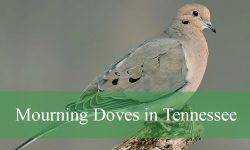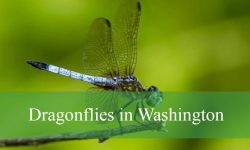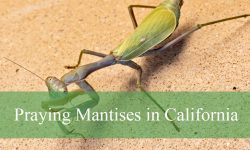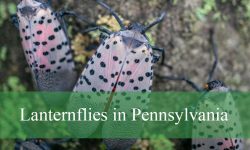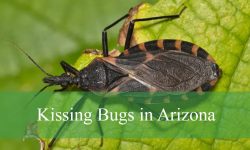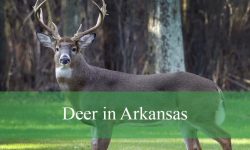Kansas is home to a stunning variety of butterflies, from vibrant swallowtails to delicate sulphurs. Each species adds color and life to the state’s prairies, gardens, and woodlands.
Whether you are exploring a backyard garden or hiking along a river valley, Kansas offers countless opportunities to spot these beautiful insects in their natural habitats. Many species, like Monarchs and Painted Ladies, are easy to recognize thanks to their striking patterns and colors.
This guide highlights 35 beautiful butterflies found in Kansas, complete with pictures and identification tips. Learn how to recognize each species, their preferred habitats, and the best times to observe them.
Different Types of Butterflies Found in Kansas
Monarch (Danaus plexippus)
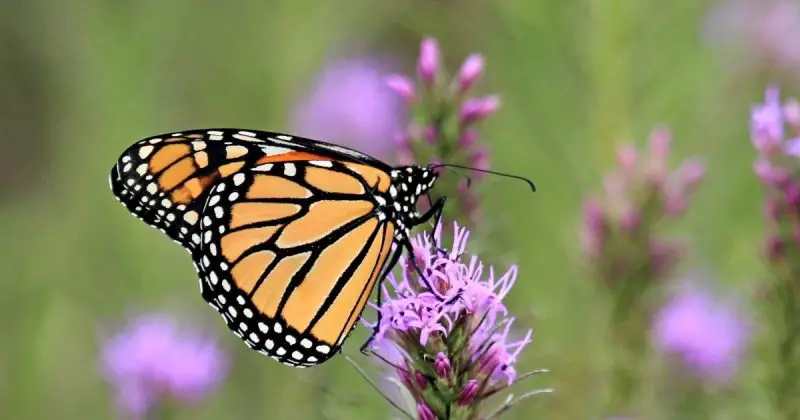
The Monarch is one of the most recognizable butterflies in Kansas, famed for its striking orange wings patterned with black veins and bordered with white spots. Males have a distinctive black spot on each hindwing, which females lack, allowing for easy sex identification. Adults typically measure between 3.5 to 4 inches in wingspan, making them one of the larger butterflies in the state.
Monarchs are known for their graceful, slow flight and their incredible migratory behavior, traveling thousands of miles between Kansas and their wintering grounds in Mexico. In Kansas, they can be seen feeding on nectar from a variety of wildflowers, especially milkweed, which is also the host plant for their caterpillars.
Their habitat spans open fields, prairies, gardens, and roadside meadows. Monarch populations in Kansas peak in late summer during the migration period, making them a favorite species for butterfly watchers and citizen science projects. Conservation efforts for milkweed planting are crucial to sustaining their numbers.
Viceroy (Limenitis archippus)
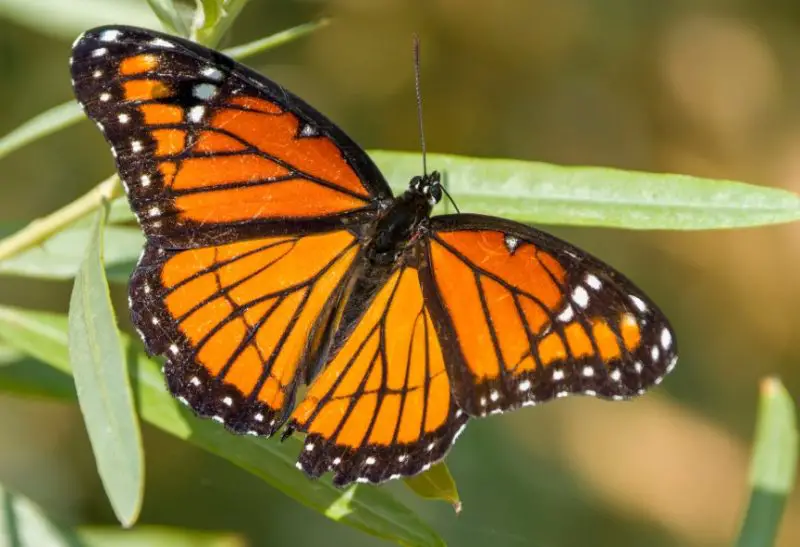
The Viceroy is a medium-sized butterfly with a wingspan of about 2 to 2.5 inches. Its orange and black pattern closely mimics the Monarch, but Viceroys can be distinguished by a horizontal black line across the hindwing. This mimicry helps deter predators, as birds often mistake them for the toxic Monarch.
Viceroys are agile fliers and often stay close to water sources, including ponds, marshes, and wet meadows. They are known for perching with wings open, displaying their intricate wing patterns to potential predators. Caterpillars feed primarily on willow, poplar, and cottonwood leaves.
In Kansas, Viceroys are scattered throughout woodland edges, wetlands, and prairie borders. They are commonly observed during summer months, particularly in areas rich with their host plants. Their presence complements Monarch populations, often adding diversity to butterfly viewing in the state.
Red Admiral (Vanessa atalanta)
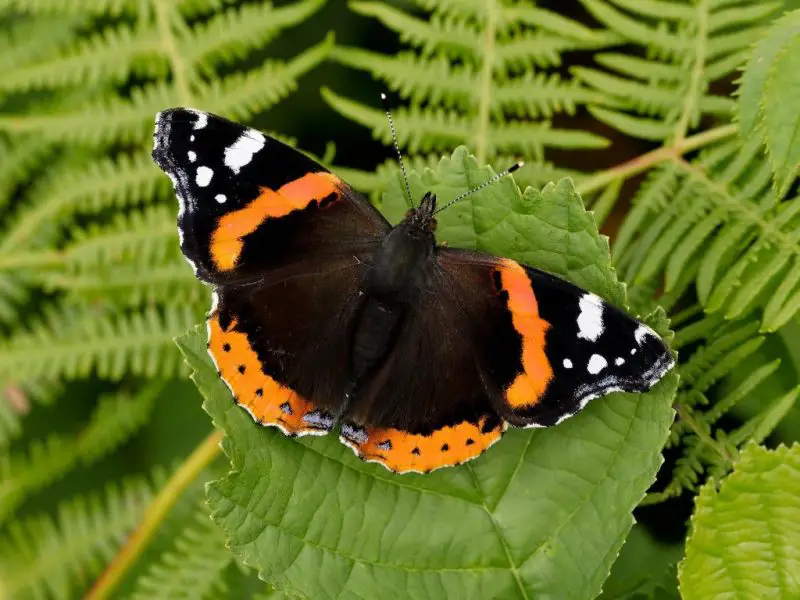
The Red Admiral is a medium to large butterfly with a wingspan ranging from 2 to 3 inches. Its dark brown to black wings feature striking red bands across the forewings and white spots near the tips, making it highly distinctive. Both males and females share similar coloration, but males may be slightly more vibrant.
Red Admirals are known for their fast, erratic flight and territorial behavior, often defending prime nectar sources. They feed on a wide range of nectar plants including asters, goldenrod, and coneflowers. The caterpillars primarily consume nettles, which can be found along Kansas rivers and disturbed soils.
In Kansas, Red Admirals are highly adaptable and frequent gardens, woodlands, and urban green spaces. They are commonly seen from spring through fall and occasionally migrate southward in colder months. Their bold coloration and active behavior make them easy to spot in the field.
American Lady (Vanessa virginiensis)

The American Lady is a medium-sized butterfly with a wingspan of about 1.75 to 2.5 inches. Its orange-brown wings are decorated with white spots and dark patches, with two small eyespots on the underside of the hindwings. These markings help camouflage the butterfly when resting among foliage.
This species exhibits a swift, fluttering flight and is often observed feeding on nectar from thistles, asters, and other flowering plants. The caterpillars prefer mallows and related plant species, which influence the butterfly’s distribution in Kansas.
American Ladies inhabit meadows, fields, gardens, and roadsides throughout the state. Their populations peak during the summer months, and they are known to migrate short distances. They are less common than the Painted Lady but are prized for their delicate beauty and distinctive wing markings.
Painted Lady (Vanessa cardui)
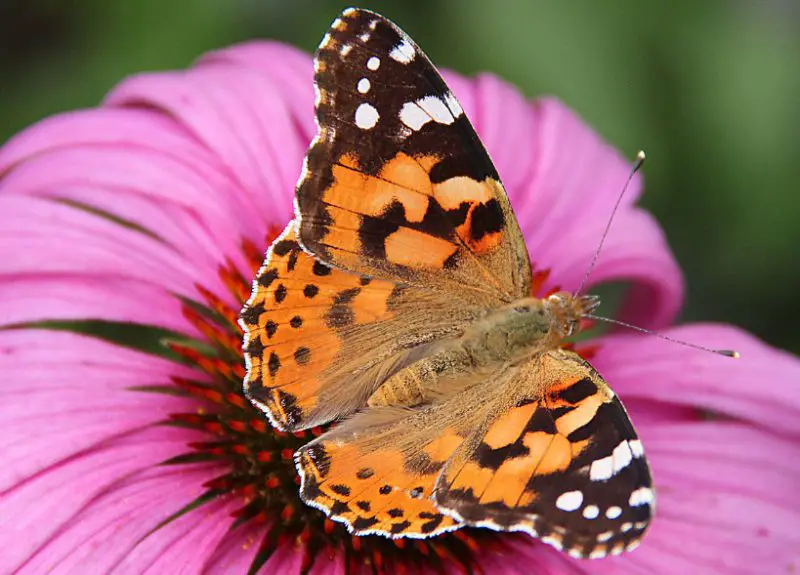
The Painted Lady is one of the most widespread butterflies in Kansas, with a wingspan of 2 to 2.5 inches. Its orange-brown wings are adorned with black spots and subtle white patches on the forewings, creating a mosaic-like appearance. Both sexes are visually similar, making identification easier by wing pattern alone.
Painted Ladies are strong fliers and can travel long distances during migration. They feed on nectar from a wide variety of plants including thistles, asters, and sunflowers. The caterpillars prefer plants in the aster family, which are abundant across Kansas prairies and gardens.
In Kansas, Painted Ladies can be seen in open fields, gardens, and meadows. They are especially abundant during late spring and summer, often joining other Vanessa species in mixed flutters. Their adaptability to diverse habitats contributes to their consistent presence across the state.
Common Buckeye (Junonia coenia)

The Common Buckeye is a medium-sized butterfly with a wingspan of 1.5 to 2.5 inches. Its brown wings are marked with orange bars and large, prominent eyespots on the forewings and hindwings. These eyespots serve as a defense mechanism against predators by drawing attention away from the body.
Common Buckeyes are known for their low, bouncy flight pattern and tendency to bask in sunny areas. They feed on nectar from a variety of flowering plants and the caterpillars specialize in plants such as plantains, snapdragons, and members of the figwort family.
In Kansas, they are commonly found in open fields, gardens, and roadsides, especially in areas with ample sun and nectar sources. Their populations surge in summer months, making them a favorite species for butterfly enthusiasts. Their distinctive eyespots and energetic behavior make them easy to identify in the wild.
Hackberry Emperor (Asterocampa celtis)
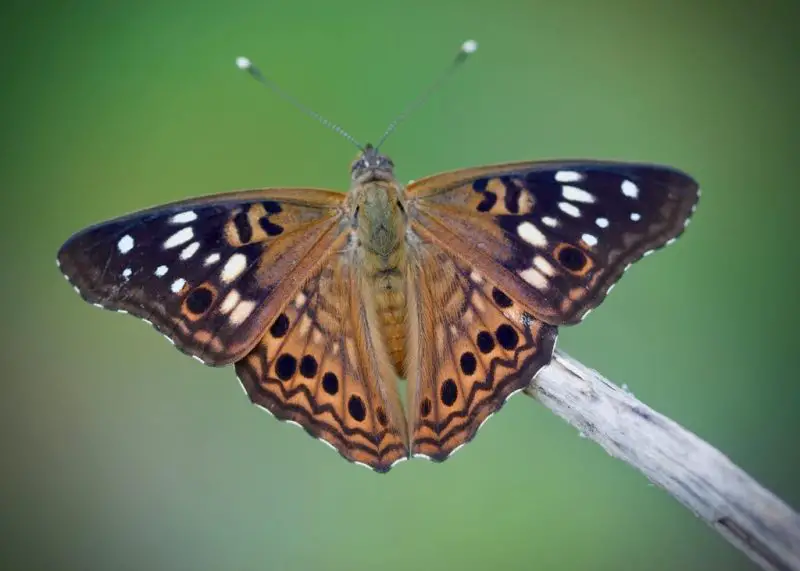
The Hackberry Emperor is a medium-sized butterfly with a wingspan of about 2 to 2.5 inches. Its brown wings feature subtle orange and white markings, and the underside is mottled gray and brown, providing excellent camouflage against tree bark. Males and females are similar in appearance, though males may show slightly darker wing tones.
This species is known for its strong, quick flight and tendency to perch on tree trunks, particularly hackberry trees, which are the primary host plants for its caterpillars. Adults feed on tree sap, rotting fruit, and occasionally nectar from flowers. Their behavior is relatively secretive compared to other butterflies, often staying close to their host trees.
In Kansas, Hackberry Emperors are commonly found in woodlands, forest edges, and riparian zones where hackberry trees grow. They are most visible from late spring through summer. Their cryptic coloration and affinity for wooded areas make them a fascinating species for observers who know where to look.
American Snout (Libytheana carinenta)
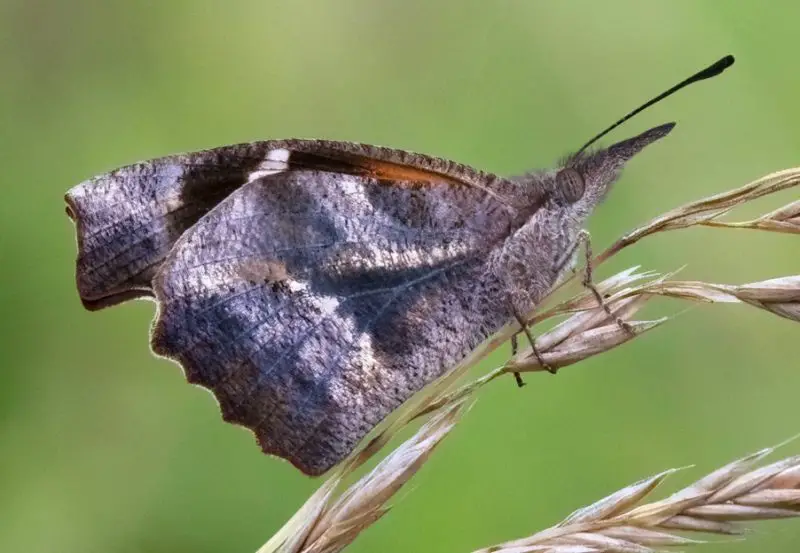
The American Snout is a medium-sized butterfly with a wingspan of 1.5 to 2.25 inches. Its brown wings are adorned with lighter patches and small, orange spots near the forewing tips. The butterfly is named for its elongated, protruding mouthparts, which resemble a tiny snout.
American Snouts are strong fliers and are often seen gliding low over open fields and along roadsides. They feed primarily on nectar but also occasionally on rotting fruit. Caterpillars specialize on hackberry trees, making these trees critical to their local populations.
In Kansas, American Snouts are more commonly seen in late summer and early fall. They prefer woodland edges, urban parks, and open areas with scattered host plants. Their unusual appearance and distinct snout make them a striking species for butterfly enthusiasts.
Question Mark (Polygonia interrogationis)
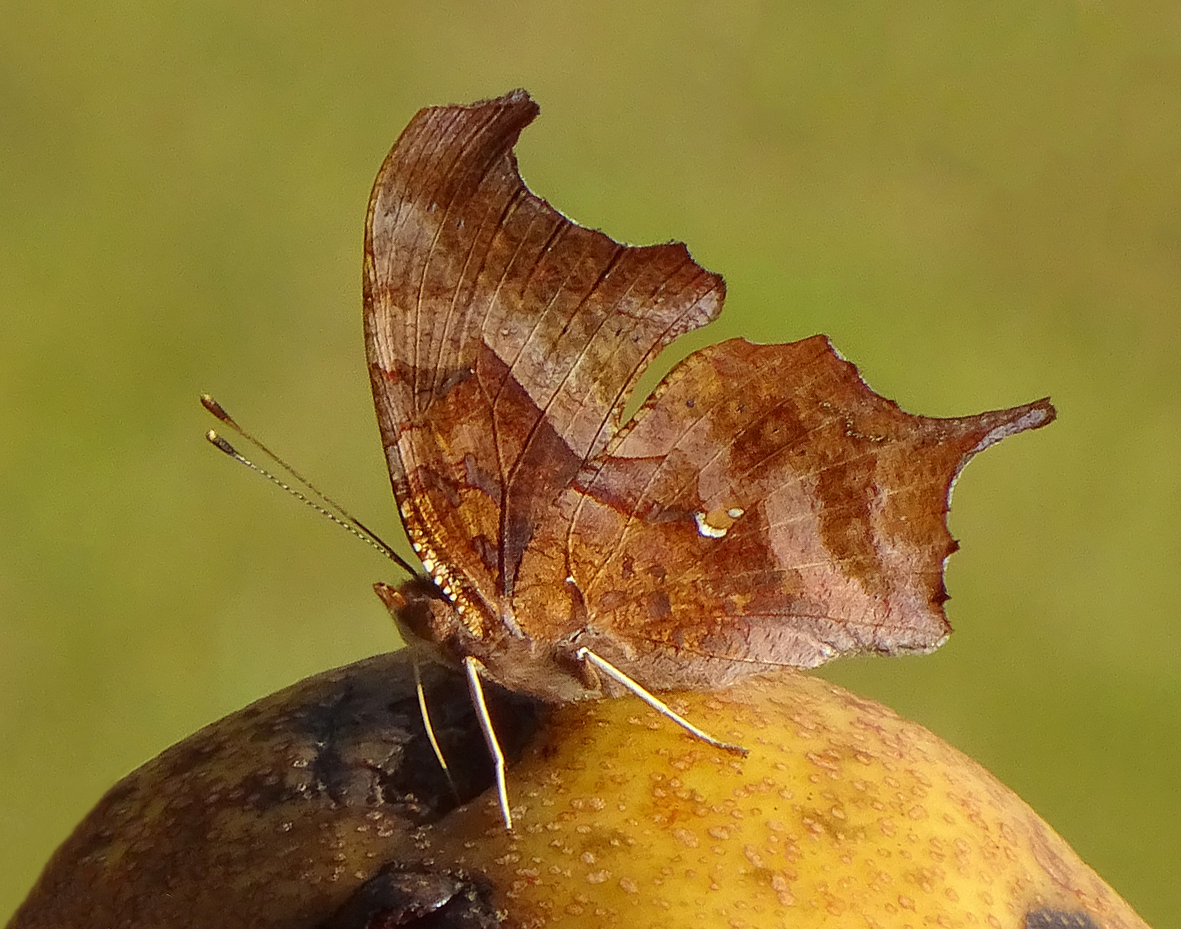
The Question Mark is a medium-sized butterfly with a wingspan of 2 to 3 inches. Its orange and brown wings feature dark borders and small silvery markings on the underside of the hindwings that resemble a question mark, which inspired its name. Males and females look alike, with only slight variations in pattern intensity.
This species exhibits a rapid, erratic flight and spends much of its time resting with wings closed, revealing its camouflaged undersides. Adults feed on rotting fruit, tree sap, and occasionally nectar. Caterpillars primarily consume elm, hackberry, and nettle leaves.
In Kansas, Question Marks are found in woodlands, forest edges, and city parks. They are most active from late spring through early fall. Their cryptic underwing patterns and unpredictable flight make them an exciting find for butterfly watchers.
Red-spotted Purple (Limenitis arthemis)
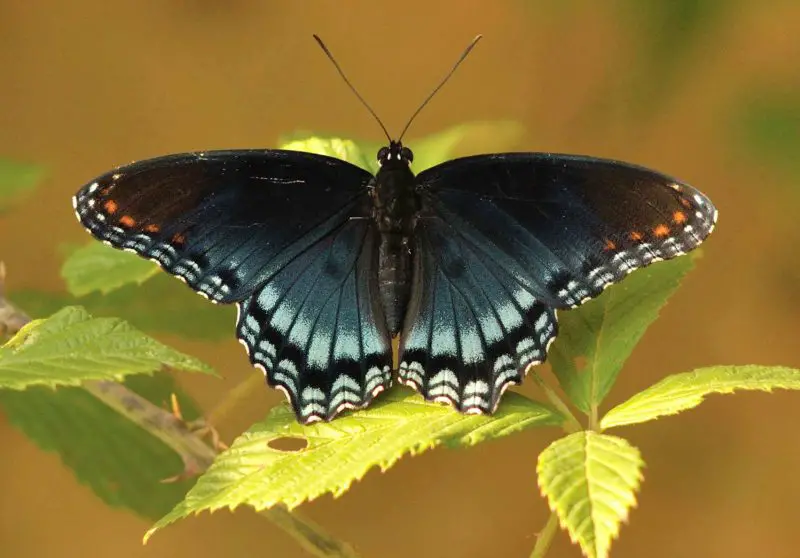
The Red-spotted Purple is a medium-sized butterfly with a wingspan of 3 to 3.5 inches. Its upper wings are deep iridescent blue-black with small red-orange spots near the edges, and the underside is brown with pale markings. Males and females have similar coloration, though females are often slightly larger.
Red-spotted Purples are agile fliers and frequently glide through wooded areas. Adults feed on tree sap, rotting fruit, and occasionally nectar, while caterpillars prefer various species of cherry, willow, and poplar. Their striking color contrast allows them to deter predators by mimicking toxic species.
In Kansas, they inhabit forest edges, riparian corridors, and urban parks with mature trees. They are most commonly seen in summer and early fall. Their dramatic coloring and rapid flight make them a visually captivating butterfly to observe in the wild.
Gulf Fritillary (Dione juno)
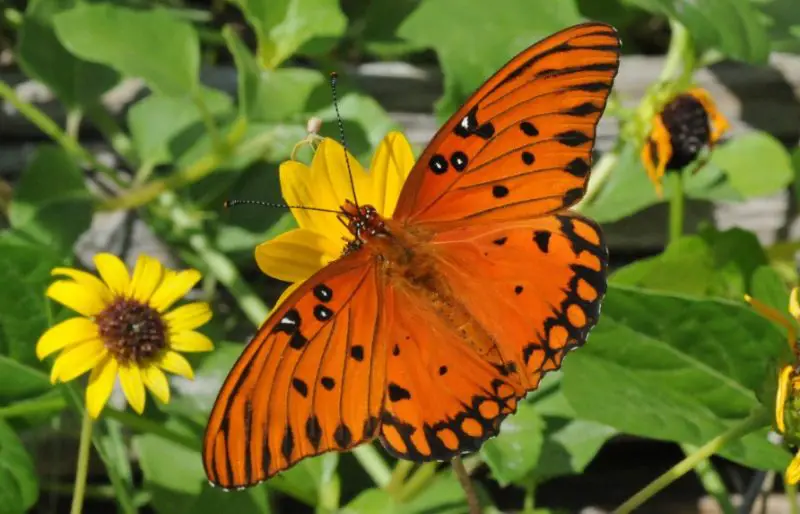
The Gulf Fritillary is a medium-sized butterfly with a wingspan of 2.5 to 3 inches. Its bright orange upper wings feature black spots and streaks, while the underside is pale brown with white spots. Males and females are similar in appearance, though males may display slightly brighter orange tones.
Gulf Fritillaries are fast, strong fliers and are often observed in gardens, fields, and open meadows. They feed primarily on nectar from passionflowers and other brightly colored flowers. The caterpillars specialize on passionflower vines, making these plants essential for local populations.
In Kansas, Gulf Fritillaries are more commonly found in the southern regions and are most abundant during the summer months. Their bright coloration, fast flight, and affinity for ornamental gardens make them a favorite among butterfly watchers.
Variegated Fritillary (Euptoieta claudia)
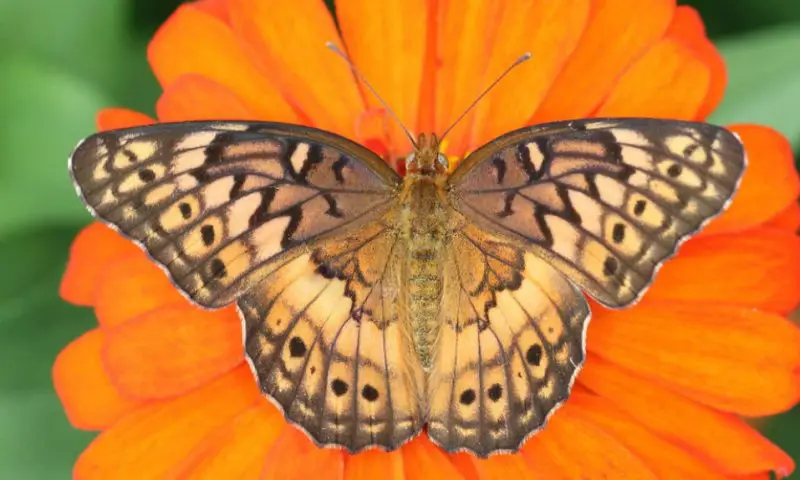
The Variegated Fritillary is a medium-sized butterfly with a wingspan of 2 to 3 inches. Its orange wings are patterned with black spots and lines, and the underside is mottled brown with subtle orange and white markings. Males and females appear similar, although females may show more muted colors.
This species has a fast, erratic flight and often feeds on nectar from violets, thistles, and other wildflowers. Caterpillars consume various host plants, including passionflower, plantain, and violets. Variegated Fritillaries are adaptable and can thrive in a variety of open habitats.
In Kansas, they are commonly seen in meadows, fields, roadsides, and gardens throughout the warmer months. Their vibrant coloration and energetic flight behavior make them easily recognizable to enthusiasts exploring prairies and suburban areas.
Painted Crescent (Phyciodes picta)
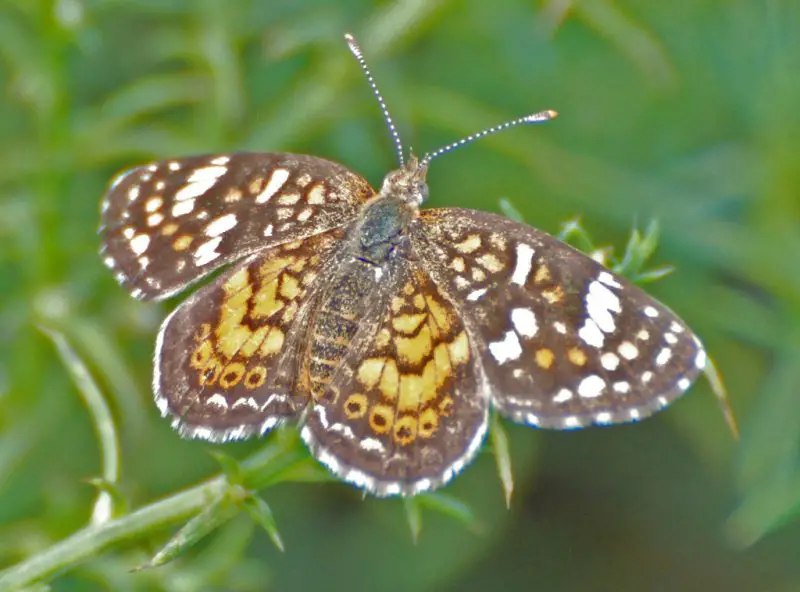
The Painted Crescent is a small butterfly with a wingspan of about 1.25 to 1.5 inches. Its upper wings are orange with black markings, while the underside is patterned with pale tan and brown lines, giving it excellent camouflage when at rest. Males and females are similar, though females may have slightly darker markings.
Painted Crescents are quick, low-flying butterflies, often seen close to the ground among grasses and wildflowers. Adults feed on nectar from asters, goldenrod, and other small flowers. Caterpillars primarily feed on plants in the aster family, which influences the butterfly’s distribution in Kansas.
In Kansas, Painted Crescents inhabit open fields, meadows, and prairie edges. They are most abundant during late spring and summer. Their small size and delicate wing patterns make them a subtle but charming species for butterfly watchers.
Gorgone Checkerspot (Chlosyne gorgone)
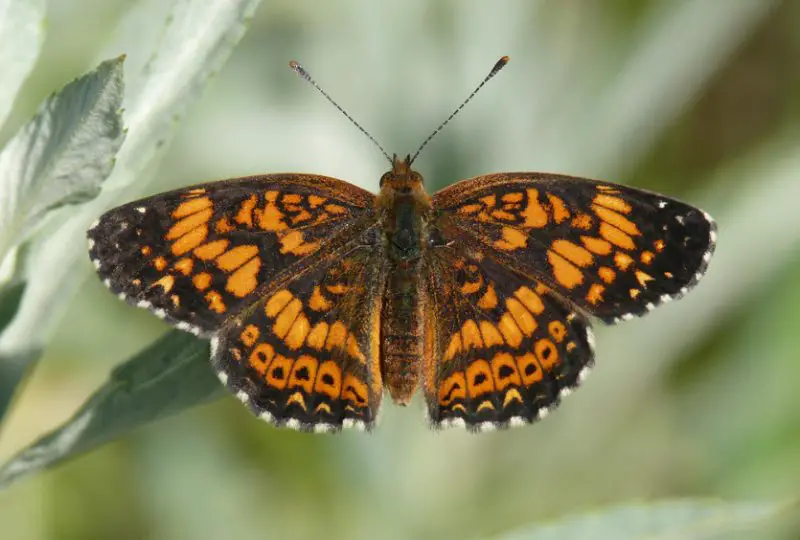
The Gorgone Checkerspot is a medium-sized butterfly with a wingspan of 1.5 to 2 inches. Its orange wings are overlaid with black checkered patterns, while the underside is brown with pale markings, providing camouflage against dried leaves. Males and females appear similar, with subtle variations in spot intensity.
This species exhibits a fluttering flight pattern and feeds on nectar from sunflowers, asters, and other wildflowers. Caterpillars consume leaves of host plants such as sunflowers and related composites. Adults are often seen basking in sunny areas while patrolling for mates.
In Kansas, Gorgone Checkerspots can be found in open fields, prairies, roadsides, and gardens with abundant nectar sources. Their populations peak during the warmer months, and they are a delight to spot due to their bold, checkered wing patterns.
Eastern Tiger Swallowtail (Papilio glaucus)
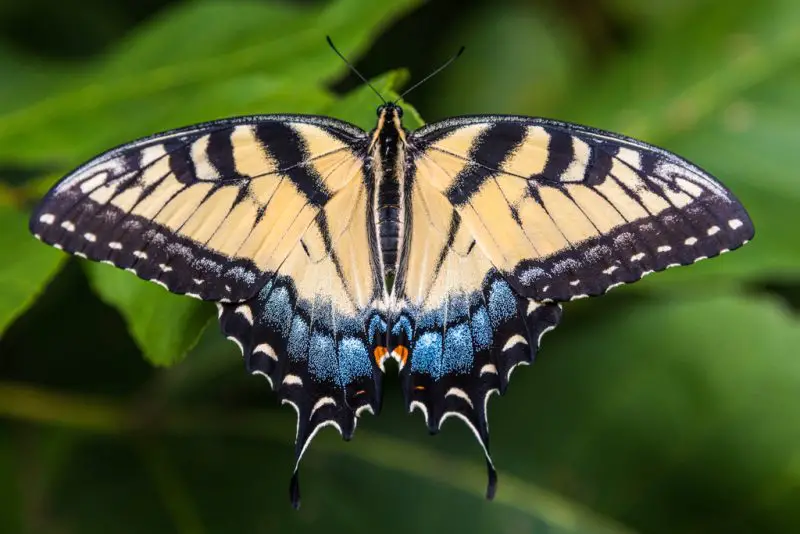
The Eastern Tiger Swallowtail is a large and striking butterfly with a wingspan of 3.1 to 5.5 inches. Its bright yellow wings are marked with bold black tiger stripes, and the hindwings feature blue and orange spots. Females may also occur in a dark morph, appearing mostly black with faint yellow markings.
These butterflies are strong and graceful fliers, frequently seen visiting nectar-rich flowers such as milkweed, lilac, and phlox. Caterpillars feed on a variety of trees, including wild cherry, ash, and tulip poplar. Adults are territorial and often patrol areas in search of mates.
In Kansas, Eastern Tiger Swallowtails are widespread across woodlands, gardens, river valleys, and suburban areas. They are most active from spring through late summer. Their large size and distinctive coloration make them one of the most eye-catching butterflies in the state.
Pipevine Swallowtail (Battus philenor)

The Pipevine Swallowtail is a large butterfly with a wingspan of 3 to 4 inches. Its upper wings are iridescent blue-black, and the underside of the hindwings is brown with striking orange spots. This coloration warns predators of the butterfly’s unpalatability due to toxins acquired from its host plants.
Pipevine Swallowtails have a strong, graceful flight and feed on nectar from a wide range of flowers, including milkweed and thistles. Caterpillars specialize on pipevine plants, which are critical for their development. Adults are often seen fluttering slowly near the host plants or basking in sunny spots.
In Kansas, they are primarily found in southern regions where pipevine plants grow, inhabiting open woodlands, gardens, and edges of forests. Their iridescent blue sheen and distinctive orange markings make them a favorite species among butterfly enthusiasts.
Black Swallowtail (Papilio polyxenes)
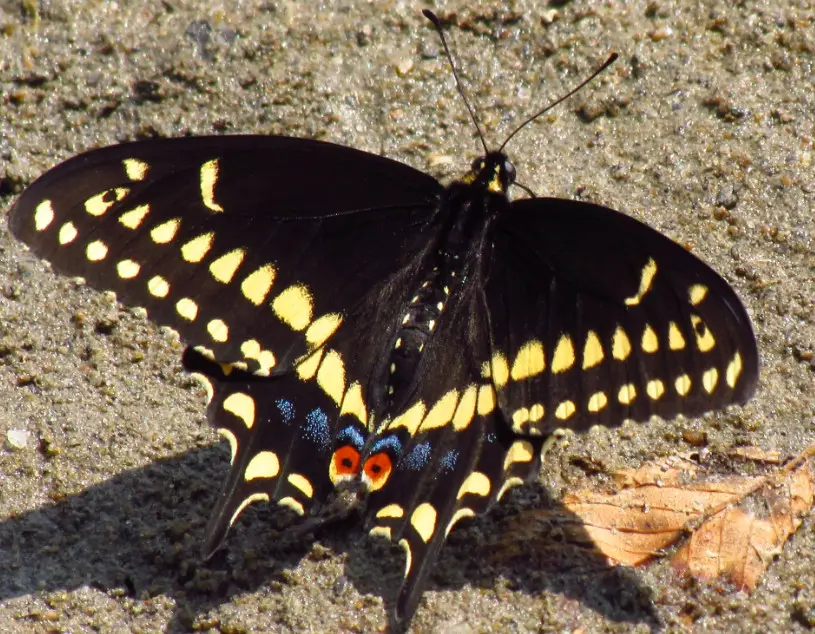
The Black Swallowtail is a medium to large butterfly with a wingspan of 3 to 4 inches. Its black wings are adorned with yellow spots forming bands across the forewings and hindwings, with small blue and orange spots near the tail. Males and females are similar, though females often display more blue on the hindwings.
Black Swallowtails are agile fliers and frequently patrol gardens and open fields while feeding on nectar from flowers such as parsley, dill, and thistles. Caterpillars feed on plants in the carrot family, including parsley and Queen Anne’s lace, making herb gardens ideal habitats.
In Kansas, Black Swallowtails are widespread across gardens, meadows, and open fields. Their bold coloration, long tails, and strong flight make them a readily recognizable and popular butterfly among nature observers.
Giant Swallowtail (Papilio garamas)

The Giant Swallowtail is the largest butterfly in this group, with a wingspan of 4 to 6 inches. Its striking yellow wings are crossed with bold black bands, and the hindwings have long tails that resemble swallow tails. Both sexes have similar patterns, although females may be slightly larger.
These butterflies are powerful fliers and often feed on nectar from brightly colored flowers. Caterpillars primarily feed on citrus and related plants, which are important for their development. Adults are territorial and may patrol over gardens, woodlands, or sunny clearings.
In Kansas, Giant Swallowtails are less common than other swallowtails but can be spotted in southern regions during the summer months. Their impressive size, bold coloration, and distinctive swallowtails make them a highlight for butterfly watchers.
Zebra Swallowtail (Eurytides marcellus)
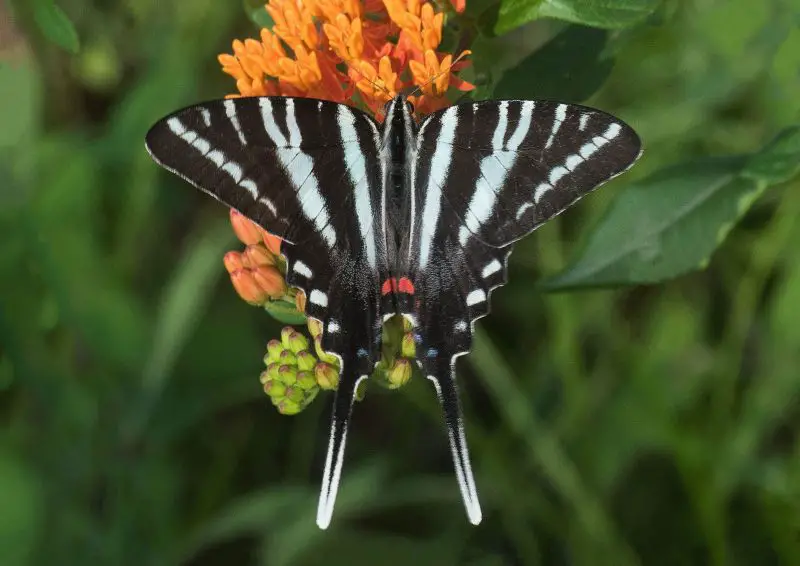
The Zebra Swallowtail is a medium to large butterfly with a wingspan of 2.5 to 4 inches. Its white wings are striped with bold black lines, resembling a zebra pattern, and the hindwings have long tails that enhance its striking appearance. Both sexes are similar, though females may appear slightly larger.
Zebra Swallowtails are fast and graceful fliers, often seen fluttering along riverbanks and woodland edges. Adults feed on nectar from a variety of flowers including red clover, milkweed, and thistles. The caterpillars specialize on pawpaw trees, which determine their habitat selection in Kansas.
In Kansas, Zebra Swallowtails are found primarily in river valleys, moist woodlands, and areas with pawpaw trees. They are most active during spring and summer, and their unique tail patterns and bold stripes make them a favorite for butterfly enthusiasts.
Spicebush Swallowtail (Papilio troilus)
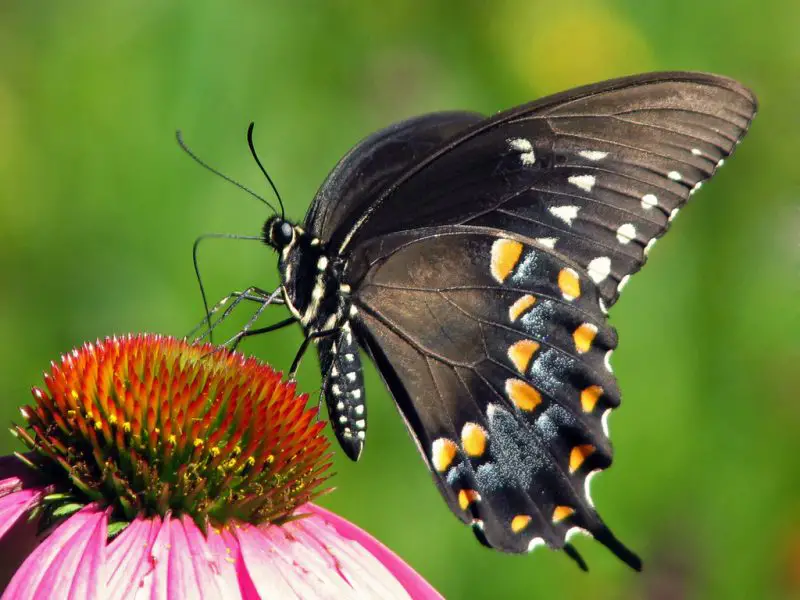
The Spicebush Swallowtail is a large butterfly with a wingspan of 3 to 4 inches. Its dark black wings feature blue and green iridescent scaling on the hindwings, with small orange spots near the tails. Females may display more blue and green than males.
This species has a powerful and steady flight, often patrolling forest edges and gardens in search of nectar. Adults feed on flowers like milkweed, phlox, and thistles. Caterpillars feed exclusively on spicebush and sassafras plants, which provide the chemical defense that makes the adult butterflies unpalatable to predators.
In Kansas, Spicebush Swallowtails are primarily found in eastern woodlands, forest edges, and suburban gardens. They are most common during late spring through summer. Their distinctive iridescent hindwings and slow, deliberate flight make them easily recognizable in the field.
Anise Swallowtail (Papilio zelicaon)
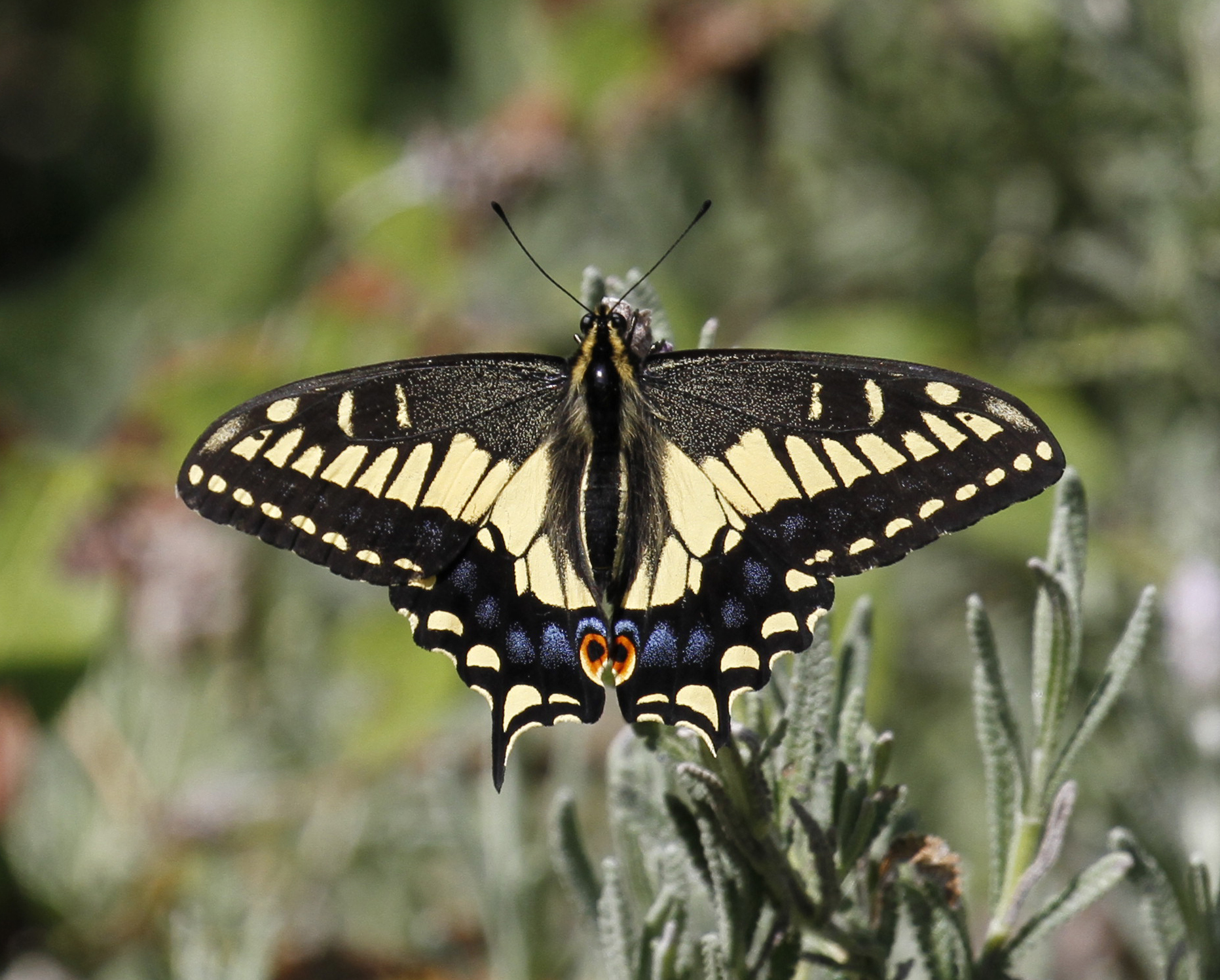
The Anise Swallowtail is a medium-sized butterfly with a wingspan of 3 to 4 inches. Its yellow wings are patterned with black tiger stripes, and the hindwings feature blue and orange spots near the tails. Both sexes appear similar, although females tend to be slightly larger.
Anise Swallowtails are strong, graceful fliers and frequent gardens, meadows, and open fields. Adults feed on nectar from a wide variety of flowers, including milkweed, thistles, and lantana. The caterpillars specialize on plants in the carrot family, including parsley, fennel, and anise, which are essential for their development.
In Kansas, Anise Swallowtails are widespread in gardens, prairies, and open areas. They are most active from late spring through summer. Their bright coloration and elegant flight make them a favorite species among butterfly watchers.
Two-tailed Swallowtail (Papilio multicaudata)

The Two-tailed Swallowtail is a large butterfly with a wingspan of 3.5 to 5 inches. Its yellow wings are accented with black tiger stripes, and the hindwings have two long tails on each side, making it one of the most distinctive swallowtails. Males and females are similar, though females may have more extensive blue scaling near the hindwings.
This species has a strong and soaring flight, often seen gliding over woodlands, river valleys, and gardens. Adults feed on nectar from flowers such as milkweed, lantana, and thistles. Caterpillars feed on a variety of host plants including ash, chokecherry, and cottonwood.
In Kansas, Two-tailed Swallowtails are primarily found in central and western regions, inhabiting woodlands, riparian areas, and open fields. Their impressive size, long tails, and bold coloration make them one of the most visually striking butterflies in the state.
Ruby-spotted Swallowtail (Papilio garamas)
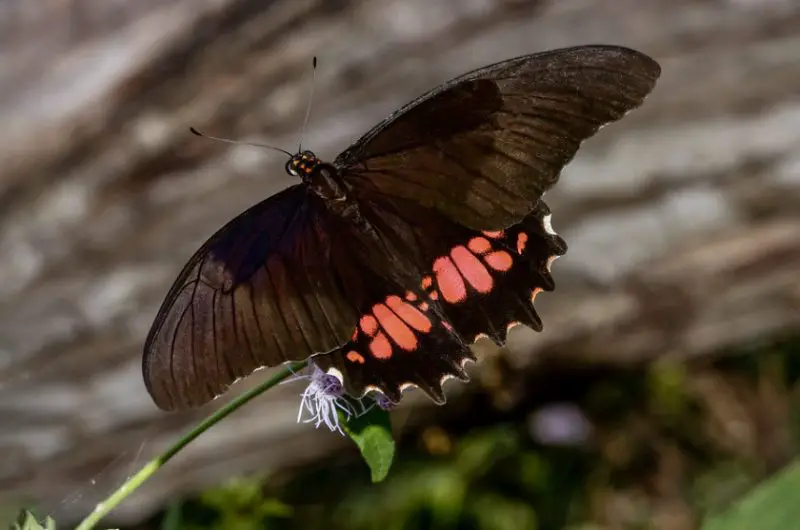
The Ruby-spotted Swallowtail is a large butterfly with a wingspan of 4 to 5 inches. Its black wings feature bright red spots near the hindwings and iridescent blue scaling on the hindwing margins. Both sexes have similar coloration, though males may be slightly smaller.
Ruby-spotted Swallowtails are strong fliers and feed on nectar from a variety of wildflowers, including milkweed, lantana, and thistles. The caterpillars feed on citrus and other plants in the Rutaceae family, which are critical for their development. Adults often patrol gardens, open fields, and forest edges.
In Kansas, Ruby-spotted Swallowtails are more common in southern regions, particularly in warmer habitats during summer months. Their bold red spots, large size, and swift flight make them a striking species for butterfly watchers.
Cabbage White (Pieris rapae)

The Cabbage White is a small to medium butterfly with a wingspan of 1.5 to 2 inches. Its pale white or cream wings have small black spots on the forewings, and the tips of the forewings are often darker. Females generally have two black spots per forewing, while males have only one.
Cabbage Whites are weak but persistent fliers, often seen hovering over gardens, meadows, and agricultural fields. They feed on nectar from a wide range of flowers, and their caterpillars are notorious pests of cabbage, broccoli, and other cruciferous crops.
In Kansas, Cabbage Whites are widespread and commonly seen from spring through fall in almost any open habitat. Their small size, pale coloration, and adaptability make them one of the most familiar butterflies in the state.
Checkered White (Pontia protodice)
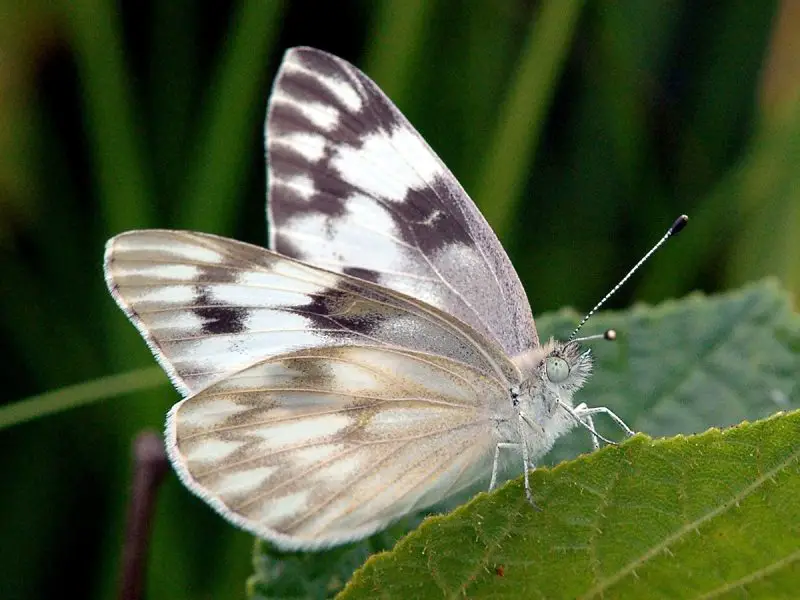
The Checkered White is a small to medium butterfly with a wingspan of 1.5 to 2 inches. Its white wings are patterned with black spots on the forewings, creating a subtle checkered appearance, while the underside of the hindwings is pale green or yellowish with small white markings. Males and females are similar, though females often have more prominent black markings.
Checkered Whites are quick fliers, often seen patrolling open fields, roadsides, and gardens. Adults feed on nectar from wildflowers such as mustard, clover, and asters. Caterpillars feed primarily on plants in the mustard family, which influences their distribution in Kansas.
In Kansas, Checkered Whites are common in prairies, agricultural fields, and sunny open spaces. They are most active from late spring through summer. Their subtle wing patterns and delicate flight make them a charming species for butterfly watchers.
Clouded Sulphur (Colias philodice)
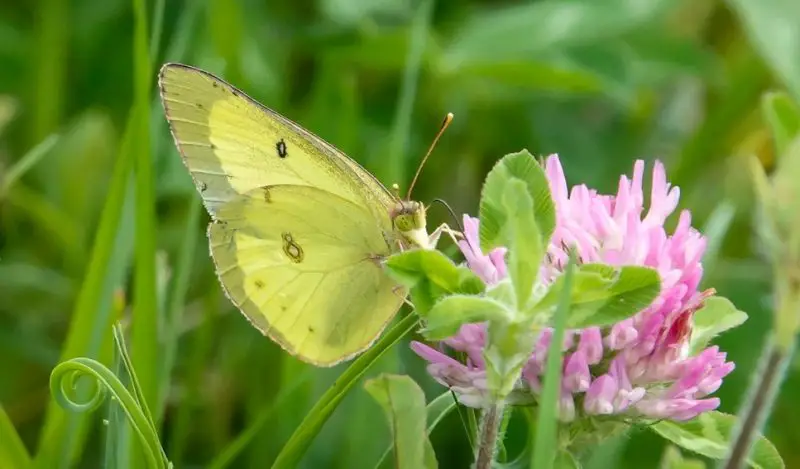
The Clouded Sulphur is a small to medium butterfly with a wingspan of 1.5 to 2.5 inches. Males are bright yellow with faint black borders on the wings, while females may be paler or even creamy white with small dark spots. The undersides of the wings are pale yellow to greenish with subtle markings, helping with camouflage.
Clouded Sulphurs are fast, low-flying butterflies, often seen visiting clover, alfalfa, and goldenrod flowers. Caterpillars feed primarily on legumes such as clover and alfalfa, making these plants essential for their life cycle. Adults are active fliers and may migrate locally to find food sources.
In Kansas, Clouded Sulphurs are widespread in meadows, pastures, roadsides, and gardens. They are most abundant during late spring and summer. Their bright yellow coloration and energetic flight make them easy to spot in the field.
Orange Sulphur (Colias eurytheme)
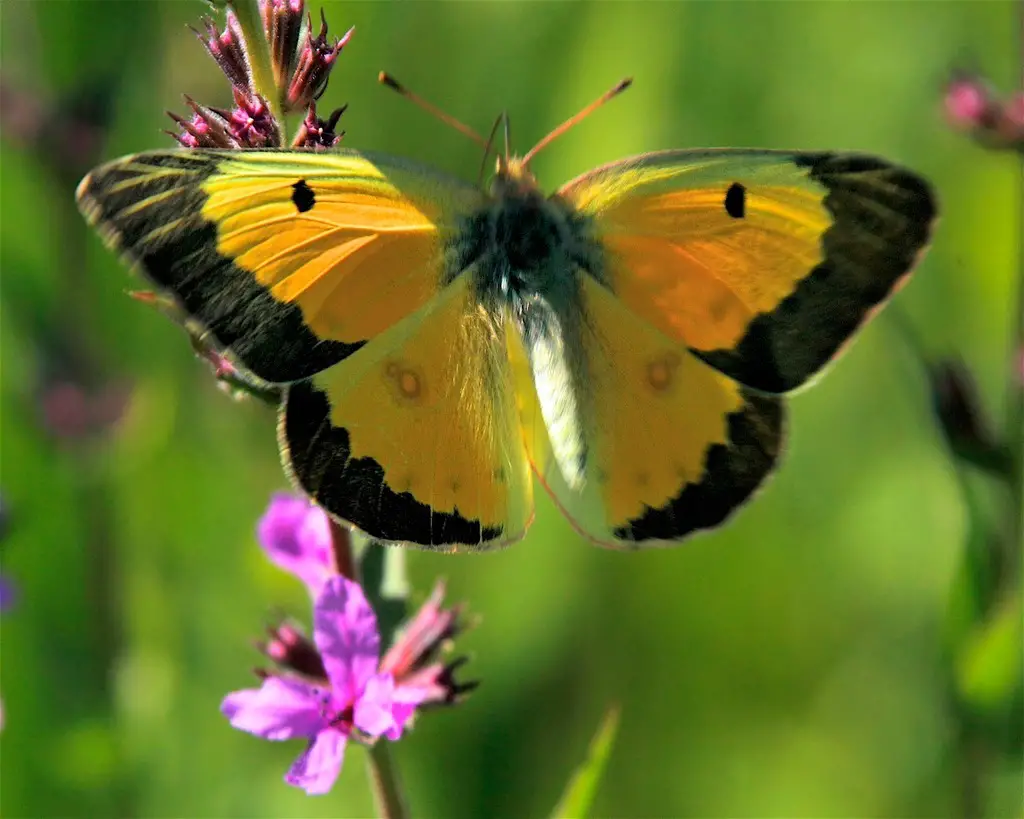
The Orange Sulphur is a small to medium butterfly with a wingspan of 1.5 to 2.5 inches. Males are bright yellow to orange with dark wing borders, while females are paler and may have more pronounced dark markings. The underside of the wings is pale yellow or greenish with small spots, aiding in camouflage when at rest.
Orange Sulphurs are agile fliers and often feed on nectar from clover, alfalfa, and other flowering plants. Caterpillars primarily consume legume plants, which provide the nutrients necessary for development. Adults are highly active and may cover significant distances during foraging.
In Kansas, Orange Sulphurs are common in open fields, meadows, gardens, and agricultural areas. They are most visible from late spring through summer. Their bright orange coloration and swift flight make them a distinctive presence among other sulphur butterflies.
Cloudless Sulphur (Phoebis sennae)

The Cloudless Sulphur is a medium butterfly with a wingspan of 2 to 3 inches. Males are bright yellow, while females may be pale yellow or greenish. The undersides of the wings are lighter with small subtle spots, helping the butterfly blend into sunny open areas.
Cloudless Sulphurs are strong fliers and often travel long distances. Adults feed on nectar from flowers such as lantana, goldenrod, and alfalfa. Caterpillars specialize on senna plants, which are critical for their development. Adults are frequently seen in large numbers during migration or in gardens.
In Kansas, Cloudless Sulphurs are found in southern regions and open areas such as fields, roadsides, and gardens. They are most active during the summer and fall months. Their bright coloration and strong flight make them easily recognizable among other butterflies.
Southern Dogface (Zerene cesonia)
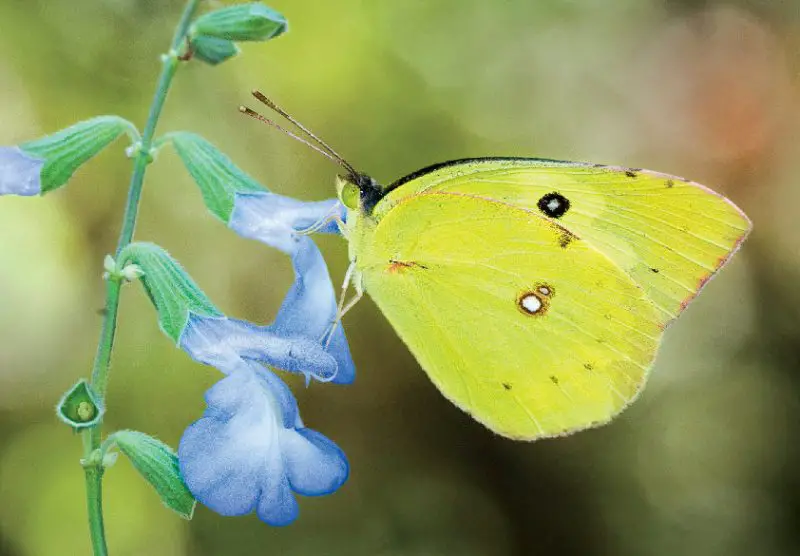
The Southern Dogface is a medium butterfly with a wingspan of 2 to 3 inches. Its upper wings are yellow with black borders, and the forewings of males display a distinctive dogface-shaped black marking. Females are similar but with less pronounced markings. The undersides of the wings are pale yellow with subtle markings for camouflage.
Southern Dogfaces are strong and fast fliers, often visiting gardens and meadows for nectar from lantana, verbena, and other flowering plants. Caterpillars feed on various species of senna, which are essential for their life cycle. Adults exhibit graceful gliding flight patterns and are highly visible in sunny areas.
In Kansas, Southern Dogfaces are primarily found in southern and central regions, especially in open fields, gardens, and roadsides. They are most active during the warmer months. Their unique wing pattern and striking flight make them a favorite for butterfly enthusiasts.
Little Yellow (Eurema lisa)
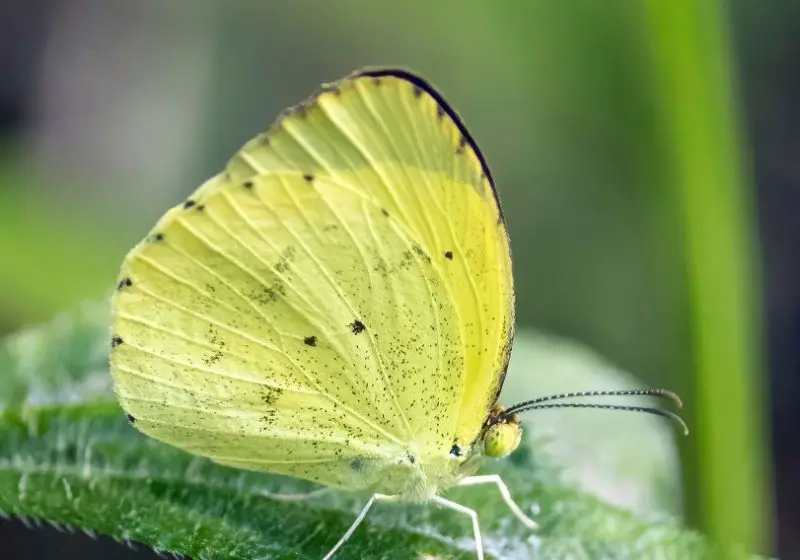
The Little Yellow is a small butterfly with a wingspan of 1 to 1.5 inches. Both sexes have bright yellow wings with subtle black borders on the forewings, and the underside is pale yellow with small faint spots. Males are slightly smaller and brighter than females.
Little Yellows are fast and fluttering fliers, frequently seen in meadows, gardens, and open fields. Adults feed on nectar from clover, lantana, and other small flowers. Caterpillars feed on plants in the pea family, including clover and partridge pea.
In Kansas, Little Yellows are widespread in open habitats, gardens, and prairie edges. They are most abundant from late spring through summer. Their small size, bright color, and energetic flight make them a delightful species to observe.
Sleepy Orange (Eurema nicippe)

The Sleepy Orange is a small to medium butterfly with a wingspan of 1.25 to 2 inches. Its upper wings are bright orange with black borders and small spots, while the underside is pale yellow to orange with subtle markings, providing camouflage when at rest. Males are typically brighter than females.
Sleepy Oranges are fast, low-flying butterflies that often visit open fields, gardens, and roadsides. Adults feed on nectar from flowers such as lantana, clover, and thistles. Caterpillars feed on plants in the pea family, particularly Cassia species, which determine where the butterfly can thrive.
In Kansas, Sleepy Oranges are most commonly seen in southern and central regions during summer and early fall. Their bright coloration, small size, and energetic flight make them a delightful species for butterfly watchers to spot.
Dainty Sulphur (Nathalis iole)
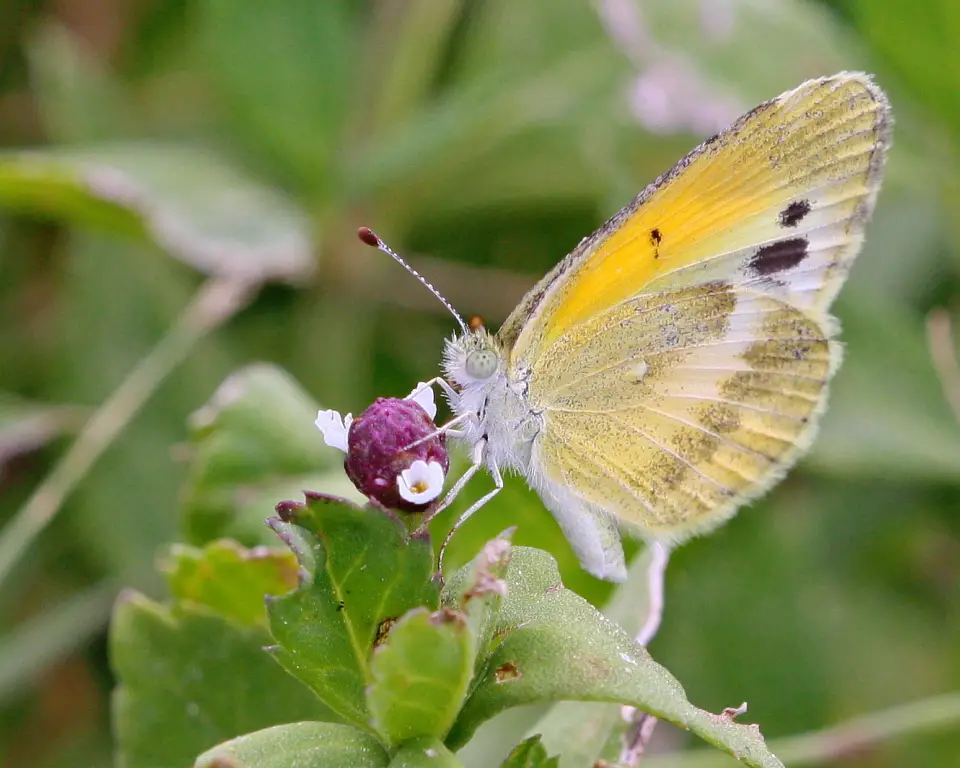
The Dainty Sulphur is a very small butterfly with a wingspan of 0.75 to 1.25 inches. Its yellow wings are accented with tiny dark spots, and the underside is pale yellow or cream with subtle markings, helping it blend into flowers and grasses. Males are often brighter than females.
Dainty Sulphurs are rapid, fluttering fliers, frequently seen in open fields, gardens, and meadows. Adults feed on nectar from small flowers, while the caterpillars specialize on legume plants such as clover and pea species. Their small size allows them to navigate through dense vegetation easily.
In Kansas, Dainty Sulphurs are widespread in sunny habitats, from prairies and roadsides to urban gardens. They are most active from late spring through summer. Their tiny size and quick movements make them charming yet sometimes challenging to observe closely.
Mexican Yellow (Eurema mexicana)
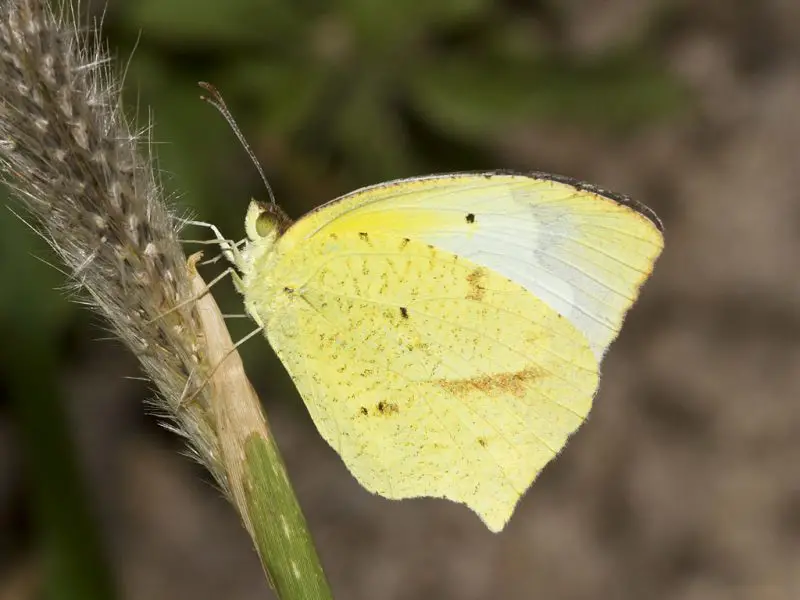
The Mexican Yellow is a small butterfly with a wingspan of 1.25 to 2 inches. Its upper wings are bright yellow with faint black borders, and the underside is paler with small spots for camouflage. Males tend to be slightly smaller and more vivid in color than females.
Mexican Yellows are fast, fluttering butterflies that often feed on nectar from lantana, clover, and wildflowers. Caterpillars feed on plants in the pea family, including Cassia and partridge pea. Adults are commonly seen in open sunny areas, patrolling for mates and nectar sources.
In Kansas, Mexican Yellows are primarily found in southern regions during late spring through fall. Their vibrant yellow coloration and small size make them easy to spot among other yellow butterflies. They are especially active on warm, sunny days.
Sachem (Atalopedes campestris)
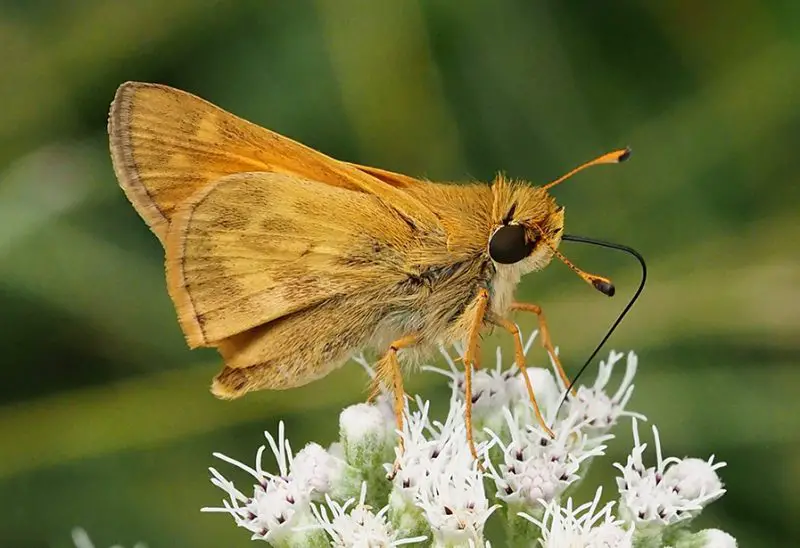
The Sachem is a small to medium skipper with a wingspan of 1.25 to 1.75 inches. Its orange-brown forewings feature dark spots, while the hindwings are light brown, providing a subtle contrast. Males have a distinct scent patch on the forewings used in mating displays.
Sachems are rapid fliers with quick, darting movements, often seen in open grassy areas and gardens. Adults feed on nectar from flowers such as lantana, clover, and goldenrod. Caterpillars feed on grasses, which are abundant across Kansas, making them a highly adaptable species.
In Kansas, Sachems are widespread in meadows, roadsides, and urban parks. They are most active from late spring through summer. Their energetic flight and small size make them a common yet engaging butterfly for observers.
Fiery Skipper (Hylephila phyleus)
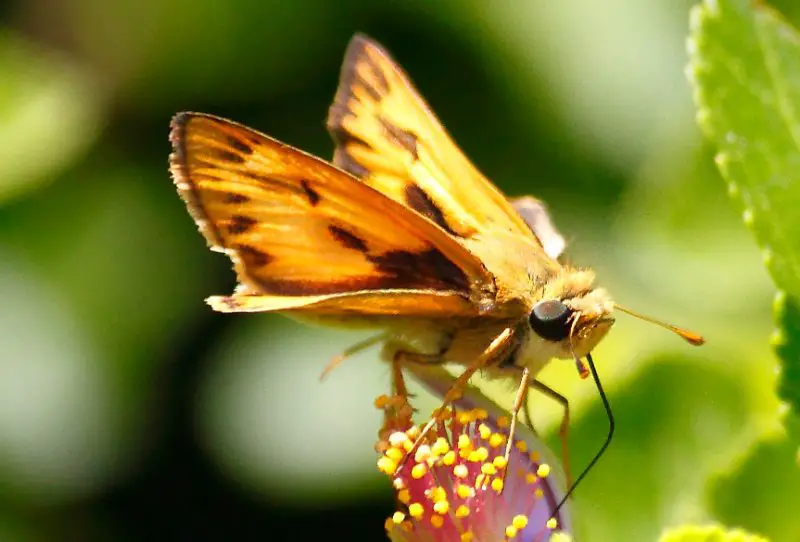
The Fiery Skipper is a small butterfly with a wingspan of 1 to 1.5 inches. Its upper wings are bright orange with dark brown markings, while the underside is paler with subtle patterning. Males are more brightly colored than females, which helps in distinguishing sexes.
Fiery Skippers are fast, erratic fliers and are often seen hovering over lawns, gardens, and open fields. Adults feed on nectar from clover, lantana, and other small flowers. Caterpillars feed primarily on turf grasses, which makes them well adapted to urban and suburban habitats.
In Kansas, Fiery Skippers are common in open areas, gardens, and grassy fields throughout the warmer months. Their bright orange coloration and darting flight make them a favorite species for casual observers and enthusiasts alike.
FAQs About Butterflies in Kansas
What are the most common butterflies in Kansas?
Kansas is home to a diverse range of butterflies, including Monarchs, Viceroys, Red Admirals, Painted Ladies, Black Swallowtails, and Clouded Sulphurs. Open fields, prairies, gardens, and woodland edges provide ideal habitats for many species.
When is the best time to see butterflies in Kansas?
Butterflies are most active during the warmer months, typically from late spring through early fall. Peak activity often occurs in mid-summer when nectar plants are abundant, and migratory species like Monarchs pass through the state.
Where can I observe butterflies in Kansas?
Butterflies can be observed in prairies, gardens, meadows, riversides, woodlands, and urban parks. Areas rich in host plants such as milkweed, clover, or passionflower attract specific species and increase chances of spotting a variety of butterflies.
How can I attract butterflies to my garden?
Plant nectar-rich flowers like milkweed, lantana, coneflowers, goldenrod, and clover. Providing host plants such as parsley, fennel, or passionflower supports caterpillar development. Avoid pesticides and create sunny, sheltered areas for resting and basking.
What are the most easily identifiable butterflies in Kansas?
Monarchs are easily recognizable for their bright orange wings with black veins. Eastern Tiger Swallowtails have bold yellow and black stripes, while Zebra Swallowtails feature black-and-white striped wings with long tails. Red-spotted Purples and Painted Ladies also have distinctive patterns.
Do Kansas butterflies migrate?
Yes, several species migrate seasonally. Monarchs travel thousands of miles to Mexico in the fall. Red Admirals, Painted Ladies, and Cloudless Sulphurs may also migrate short or long distances depending on weather and food availability.
Are there endangered or rare butterflies in Kansas?
While most common species are widespread, some butterflies like the Regal Fritillary and certain swallowtails may have localized populations. Preserving native prairies, host plants, and nectar sources helps maintain their populations.

